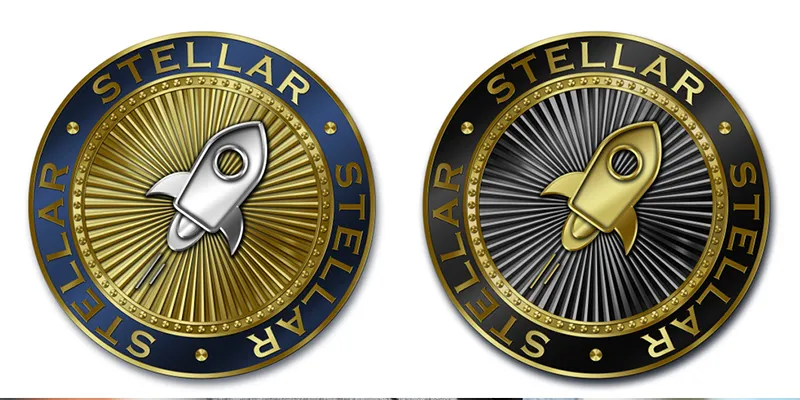Stellar for beginners: everything you need to know
The exponential growth in value of Bitcoin and other cryptocurrencies in 2017 took everyone by surprise. As the year ended, there seemed to be no limit to what cryptocurrencies could achieve, buoyed by frenzied investor interest and wild speculation. All of those castles have come crashing down in the first three weeks of the new year; Bitcoin has lost over half its value this week, and other major alt-coins like Ethereum and Ripple aren’t faring any better. But amidst all this gloom, there are still a few bright sparks attracting investment and value in the cryptocurrency space. One of these is Stellar.

Say hello to Stellar
Stellar is a platform/network that has sparked interest in accepting the internet as a factor for its functioning. Recently, it has been in the news for being one of the growing cryptos (its tokens are called Lumens) in the field, reaching a market capitalisation of $8.7 billion (at the time of writing this) apart from a hack that involved withdrawing $400,000 Blackwallet.co that is about 23% of the tokens on Stellar threatened the platform. Collective efforts are being made to retrieve it from the hosting server.
It works on a consensus protocol. This platform promotes the organic growth of the network, than a unanimously accepted list of nodes. It acts as a medium where an organisation can extend a financial opportunity to unserved communities. For open and inclusive financial services like InVenture that offers credit facilities based on data collected by their application to communities that face local challenges in areas like Tanzania and Kenya.
Stellar founder Jed McCaleb is a celebrity in his own right in the cryptocurrency world, often compared to Satoshi Nakamoto and Vitalik Buterin in terms of impact. Jed was known for creating the exchange on which bitcoin was initially transacted upon – Mt. Gox – and as one of the first founders of Ripple. His experiences with his various ventures and the state of the banking industry inspired him to create a cryptocurrency that would make cross-border business transactions smoother and faster, and thus Stellar was born. Stellar functions on a premise that is similar to Ripple but with a network fork – the Stellar network is far more open and decentralized when compared to Ripple, and the Stellar organisation which manages the cryptocurrency network is non-profit, unlike Ripple. In fact, it would be fairly accurate to call Stellar a “more open and decentralized Ripple.” Stellar is constructed on the Federated Byzantine Agreement (FBA) structure which functions on a worldwide protocol consensus. It is a mandate for a set of nodes (that one particularly chooses) to reach an agreement on the validating the transaction. So how does the system work?
Stellar is based on the concept of a quorum and not a block which we often hear. The quorum comprises of quorum slices that validate the transaction and come to an agreement. For something like a transfer of funds across geographical destinations, transaction times can be as low 2-5 seconds – with a minimal transaction fees of $0.01, and cryptographic security, of course. The stellar network boasts the integrity and validation of regular financial transactions. It provides a certificate of transparency and has an indelible certificate history. This makes it a viable concept for financial bodies, from banks to micro-finance institutions, for transactions ranging from accepting deposits to remittances, or transaction of any digital financial asset.
Are the tech giants going to be the next banks?
At the helm of digitisation, we are witnessing a movement of tech banks. This encourages a leap in moving control to organisations who are the information banks through their massive equipment of servers and network. The recent partnership of IBM with adopting stellar – The talk went viral at the world’s biggest finance events SIBOS 2017 to fasten the global payments processing. IBM seemed more than excited to utilise lumens in coherence with other blockchain firms in conversion of fiat currencies (currently, the British Pound and the Fijian Dollar – inclusion of seven other currencies)
Stellar’s need for server systems seems lucrative for companies alike, who with this attribute can tackle the geopolitical limitations and issues that arise from cross-border transactions and their regulations. The platform cuts down transaction costs considerably within cross border exchanges, and makes convertibility of fiat currency seamless. Using lumens as an intermediate token for participation within the system, financial institutions stand to benefit greatly from the four key pillars of the Stellar network – decentralisation, speedy execution of transactions in real time (just like e-mail), trust, and digital signatures.
Banks are increasingly exploring new ways for the digitisation of currency. Stellar’s facilities and features make it an attractive option for banks and other financial institutions, especially considering the scope of growth in developing markets, where all you need is a mobile and the internet. Could Stellar be the innovation that paves the way for the democratization of banking through a blockchain ecosystem? Time will tell.







